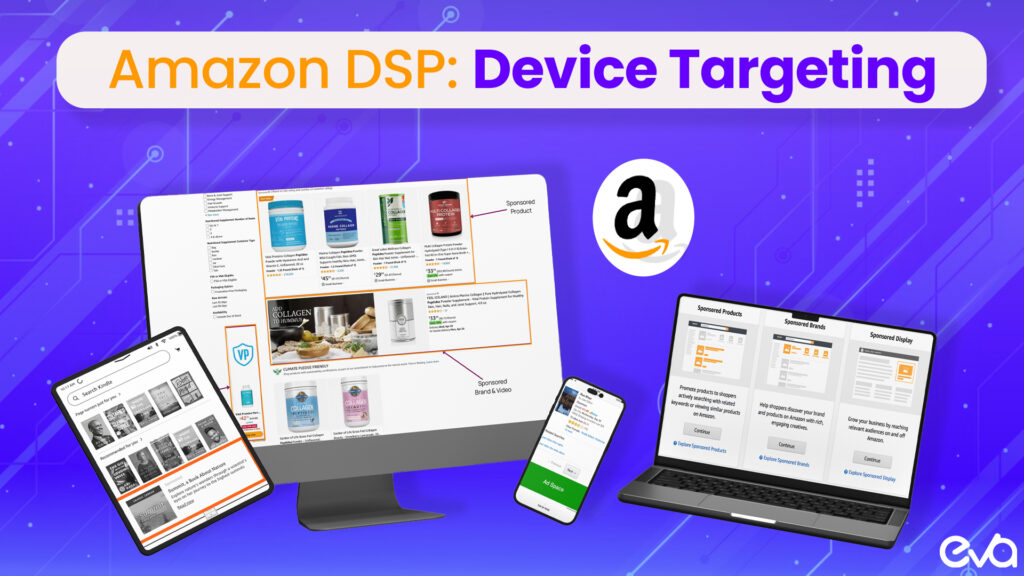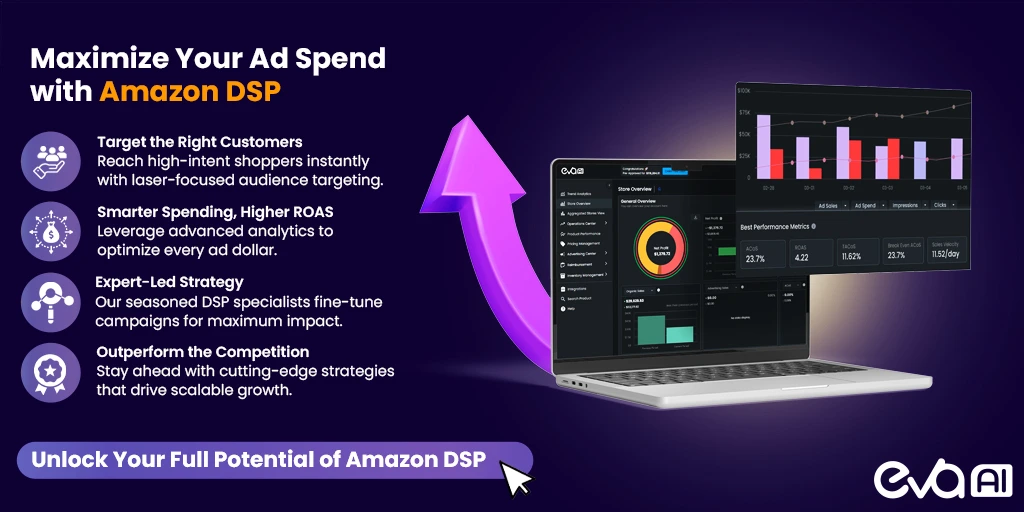Table of Contents
Introduction
Amazon DSP (Demand-Side Platform) is a powerful digital advertising platform that enables advertisers to programmatically buy display, video, and audio ads both on and off Amazon.
This platform is pivotal in digital advertising due to its extensive reach and ability to deliver highly targeted ads.
One of the critical tools within Amazon DSP is device targeting, which allows advertisers to tailor their campaigns based on the specific devices their audience is using.
By focusing on device targeting, advertisers can optimize their ad performance, ensuring that ads are displayed on devices that are most likely to engage users and convert.
What is Device Targeting?
Device targeting in Amazon DSP enables advertisers to reach users based on the devices they use, such as computers, smartphones, and tablets.
This approach is crucial because it allows for more personalized and relevant ads, tailored to the specific device and user behavior.
By targeting devices, advertisers can enhance user engagement and conversion rates, as ads are more likely to resonate with the audience when presented in a format that matches their preferred device.
The Importance of Device Targeting
Device targeting is essential because it increases ad relevance and improves campaign effectiveness.
By focusing on specific devices, advertisers can deliver content that fits the user’s preferred medium, enhancing the user experience and boosting engagement.
Amazon DSP provides advertisers with the flexibility to target users on various devices, such as computers, smartphones, and tablets, allowing them to reach their audience in the most effective manner possible.
Benefits of Device-Specific Campaigns
- Enhanced User Experience: By tailoring content to fit the screen size and capabilities of each device, advertisers can provide a more seamless and enjoyable experience for users. For example, mobile-optimized ads for smartphones ensure that content is easy to navigate on smaller screens, while desktop ads can leverage larger visuals and more detailed information.
- Reduced Wasted Ad Spend: Device-specific campaigns allow advertisers to focus their efforts on the devices that are most likely to convert, minimizing wasted ad spend. By analyzing device performance data, advertisers can allocate their budget more efficiently, targeting devices that yield the highest return on investment (ROI).
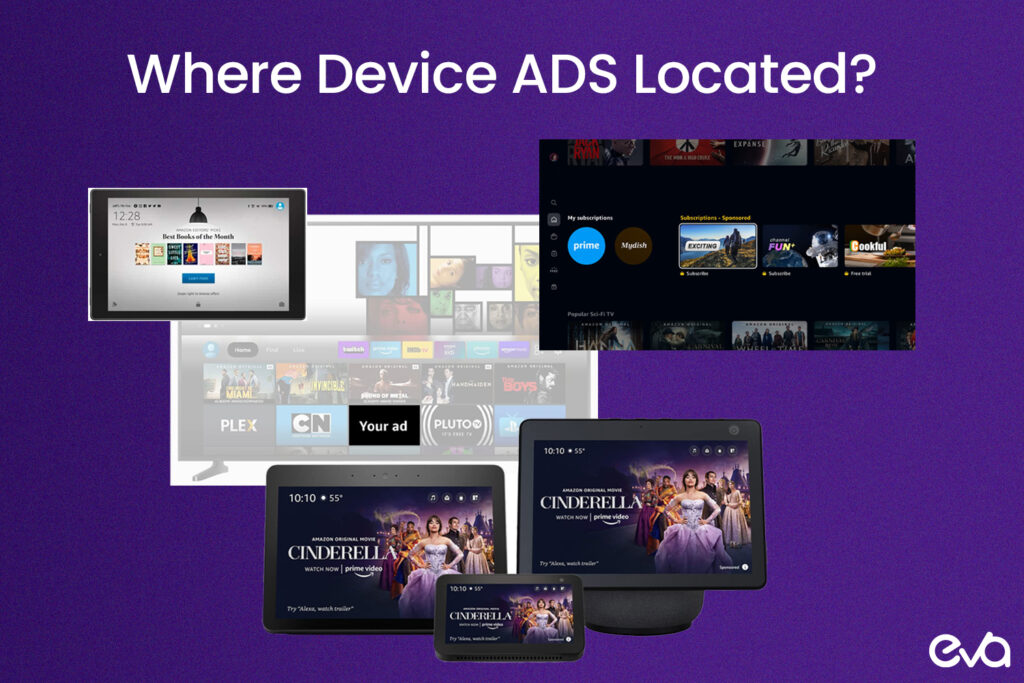
Device Categories Provided by Amazon for Targeting
Overview of Available Device Categories
Amazon DSP offers several device categories for targeting, ensuring that ads are delivered with precision.
This flexibility allows advertisers to reach their audience on their preferred devices, maximizing the impact of their campaigns.
Breakdown of Device Types:
- Computers: Target desktop and laptop users who might prefer viewing content on larger screens. This category is ideal for detailed ads that require more screen space or interactive elements.
- Smartphones: Reach users on-the-go with mobile-optimized ads. Smartphone users often engage with content in short bursts, making concise and visually appealing ads more effective.
- Tablets: Engage tablet users who often have a higher engagement rate due to the larger screen size. Tablets provide a balance between mobility and screen real estate, making them suitable for interactive ads and rich media content.
Advanced Targeting Options
- Device Models: Specify particular models to target, such as high-end smartphones or budget devices. This allows advertisers to tailor their messaging to the device’s capabilities and the user’s likely spending power.
- OS Versions: Focus on users running specific operating system versions to ensure compatibility and relevance. Targeting based on OS versions can help in delivering ads that are optimized for the latest features and security standards of the device.
- Carriers and Platforms: Target users based on their mobile carrier or platform (e.g., iOS vs. Android). This option is useful for campaigns that are tailored to the unique characteristics of different platforms or carrier-specific promotions.
- New Mobile Devices or Wi-Fi Users: Reach users with newly purchased devices or those connected to Wi-Fi for better ad performance. This can be particularly effective for high-bandwidth ads, such as videos or interactive content, which perform better on stable internet connections.
How to Optimize Ad Campaigns for Different Devices
Analyzing Metrics and Optimizing
Key Metrics to Monitor:
To optimize ad campaigns for different devices, it is crucial to track important metrics such as click-through rates (CTR), conversion rates, and bounce rates across various devices.
These metrics provide insights into how well ads are performing on each device, helping advertisers make informed decisions about where to allocate their budget.
Adjusting Campaigns Based on Performance:
Using data-driven insights, advertisers can modify their campaigns to improve performance on underperforming devices.
For example, if smartphone ads have a lower conversion rate than desktop ads, advertisers might consider optimizing their mobile creatives or adjusting their targeting strategy to better suit mobile users.
Bid Adjustments for Device Optimization
Understanding Bid Adjustments:
Bid adjustments allow advertisers to change their bids based on the performance of ads on different devices.
This helps maximize the return on ad spend (ROAS) by allocating more budget to devices that are performing well and reducing spend on those that are not.
Valid Bid Adjustment Ranges:
- Computers: -100% to +900%
- Smartphones: -100% to +900%
- Tablets: -100% to +900%
Applying Bid Adjustments:
To effectively set and optimize bids for each device type, advertisers should consider the following tips:
- Analyze Device Performance Data: Review historical performance data to identify which devices are driving the most conversions and adjust bids accordingly.
- Test and Iterate: Continuously test different bid adjustments to find the optimal range for each device. Monitor performance and make adjustments as needed to maximize ROI.
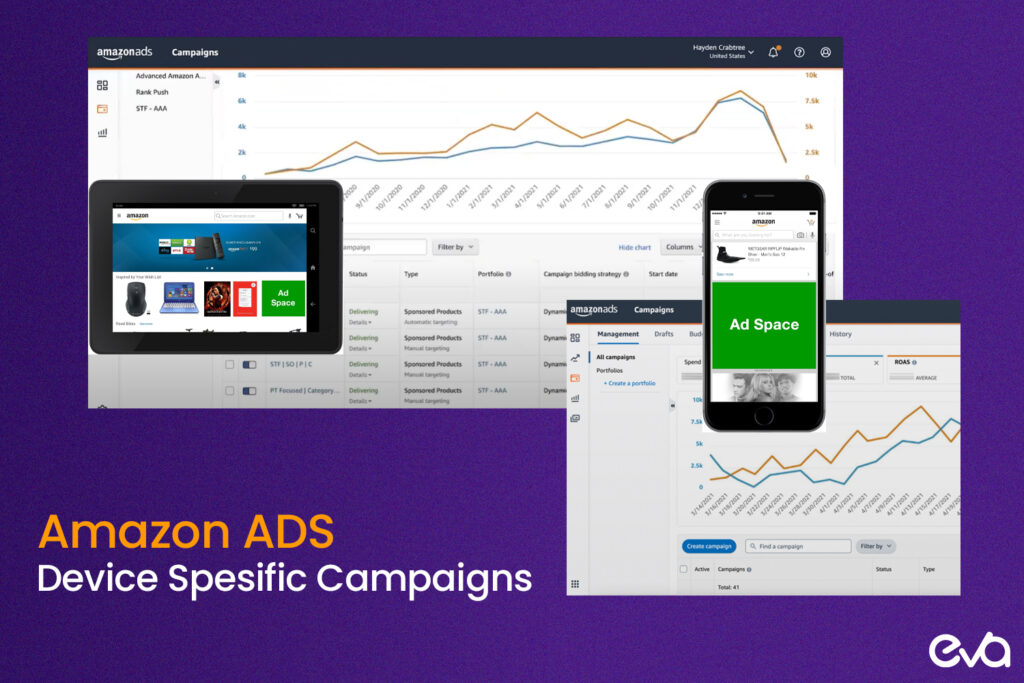
How Eva Guru Can Help with Device Targeting
Eva Guru’s Role in Enhancing Device Targeting
- Advanced Analytics: Eva Guru offers robust analytics tools that provide insights into how different devices are performing within your campaigns. These insights help advertisers make data-driven decisions and optimize their device targeting strategies.
- Automated Optimization: Leverage Eva Guru’s automated optimization features to dynamically adjust bids and targeting based on real-time device performance data. This ensures that ads are always optimized for the best possible performance.
- Customizable Targeting Solutions: Eva Guru enables advertisers to create highly customized targeting strategies that align with their specific campaign goals. Whether targeting specific devices, OS versions, or carriers, Eva Guru provides the tools needed to achieve precise targeting.
- User-Friendly Interface: With an intuitive interface, Eva Guru simplifies the process of managing and optimizing device targeting, even for those new to Amazon DSP. This makes it easier for advertisers to implement and adjust their targeting strategies.
Unique Features and Differentiators
- Real-Time Reporting: Access real-time data on device performance, allowing for quick adjustments and better-informed decision-making. This feature is particularly useful for advertisers who need to respond to changing market conditions or campaign performance.
- Cross-Device Insights: Gain deeper insights into user behavior across different devices, helping you to craft more cohesive and effective ad strategies. Understanding how users interact with ads on various devices can help advertisers create more engaging and effective campaigns.
Understanding Your Target Market
Strategic Decision-Making
Understanding your audience’s device preferences is crucial for making informed decisions about device targeting.
By analyzing device usage data, advertisers can identify which devices their audience prefers and tailor their campaigns accordingly.
Examples and Case Studies
Presenting real-world examples or hypothetical scenarios where effective device targeting led to improved campaign results can provide valuable insights for advertisers.
Use data to illustrate the impact of targeting specific devices within different market segments, demonstrating how device targeting can enhance campaign performance.
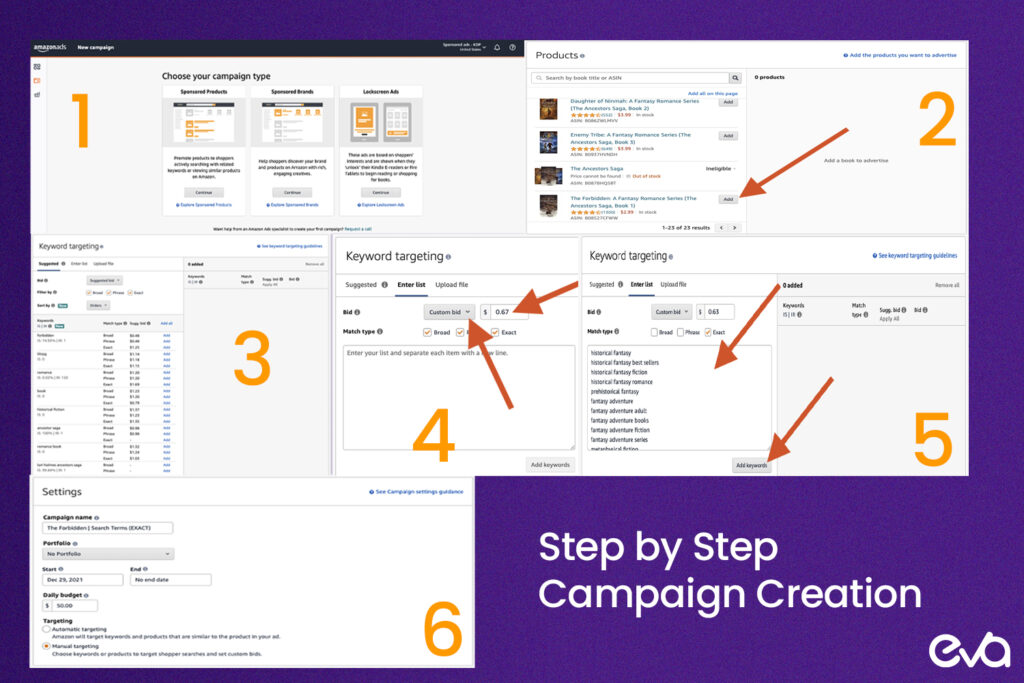
How to Target Ads by Device Type
Creating a Device Filter on a Policy
Step-by-Step Guide:
- Navigate to Amazon DSP: Start by logging into your Amazon DSP account.
- Select the Campaign: Choose the campaign you want to apply the device filter to.
- Create a New Device Filter: Go to the targeting options and select “Device Targeting.”
- Choose Device Attributes: Select the specific attributes you want to target, such as device model, OS version, or carrier.
- Set the Values: Define the values for each attribute, such as “iOS” for the OS version or “Samsung Galaxy” for the device model.
- Apply the Filter: Save the device filter and apply it to your campaign.
Filters and Their Values:
- Attribute: Device Tag
- Value: Options include IP Address, Hostname, OS, OS Version, Active Directory Organizational Unit
- Condition: Options include “Is,” “Is not,” “Contains,” “Does not contain”
Best Practices for Device Targeting
Aligning Device Targeting with Campaign Goals:
Ensure that your device targeting strategy supports your overall campaign objectives.
For example, if your goal is to drive app downloads, focus on targeting smartphones and tablets where users are more likely to engage with app-related content.
Testing and Iteration:
Emphasize the importance of continuous testing and iteration to refine your targeting strategy. Regularly review performance data and make adjustments as needed to optimize your campaigns.
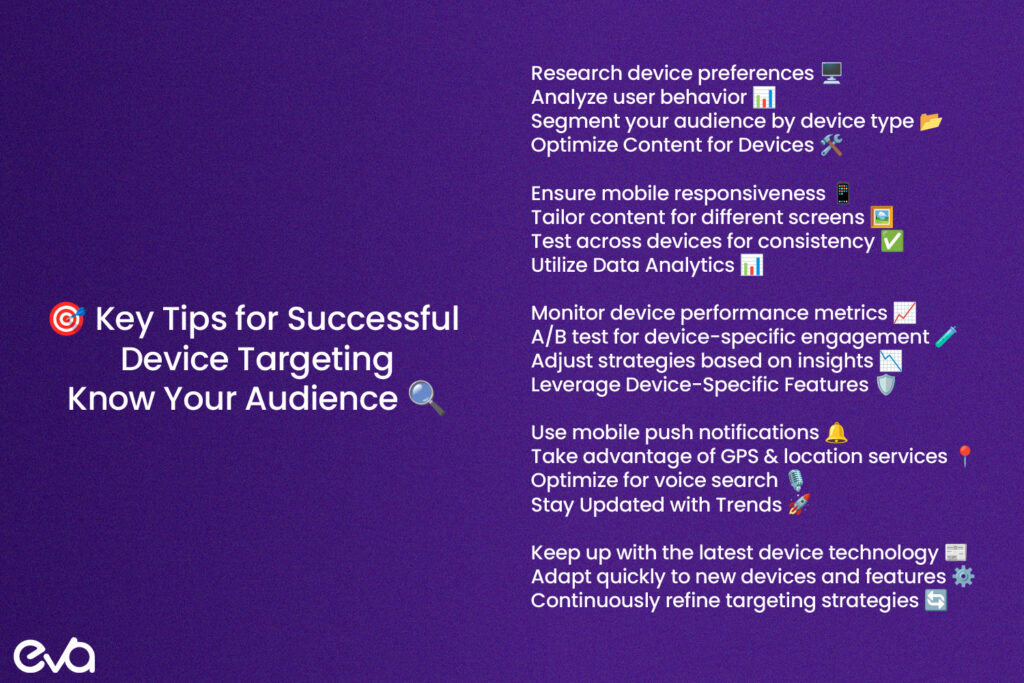
Final Tips for Successful Device Targeting
To make the most out of device targeting in Amazon DSP, here are some actionable tips:
- Understand Your Audience: Analyze your audience’s device preferences and behavior to tailor your ad content accordingly. Knowing which devices your target market uses most can help you allocate your budget effectively.
- Optimize Creatives for Each Device: Ensure that your ad creatives are optimized for different devices, providing a seamless user experience across all platforms.
- Utilize Advanced Targeting Options: Take advantage of Amazon DSP’s advanced targeting options, such as targeting by device models, OS versions, and carriers, to deliver highly relevant ads.
- Monitor and Adjust Regularly: Keep a close eye on key performance metrics and be ready to adjust your campaigns based on device performance data. Continuous testing and iteration are key to refining your strategy.
Leverage Automation Tools: Use tools like Eva AI Platform to automate optimization processes, making it easier to adjust bids and targeting in real time based on device performance.
Conclusion
In this blog, we’ve explored the vital role of device targeting in Amazon DSP and how it can significantly enhance ad performance.
Device targeting allows advertisers to tailor their campaigns to specific devices, ensuring that ads are more relevant and engaging to users.
By focusing on computers, smartphones, and tablets, advertisers can optimize ad delivery to match user preferences, resulting in higher engagement and conversion rates.
The flexibility and precision offered by Amazon DSP in targeting specific devices, models, OS versions, and more, empower advertisers to make data-driven decisions that maximize their return on investment.
Ready to elevate your Amazon DSP campaigns?
Start implementing device targeting strategies today to see how they can boost your ad performance and ROI.
Remember to monitor your results closely and make data-driven adjustments for continuous improvement.
Whether you’re new to Amazon DSP or looking to refine your existing strategies, focusing on device targeting can help you reach your advertising goals more effectively.
FAQs
Setting up device targeting involves selecting the desired device categories (e.g., computers, smartphones, tablets) within Amazon DSP and applying filters based on your campaign goals.
The “Other” section typically refers to devices that do not fit into the predefined categories like computers, smartphones, or tablets. This could include less common devices or those not yet categorized by Amazon.
Yes, Amazon DSP offers advanced targeting options such as targeting by device models, OS versions, carriers, and platforms. You can also target users with new mobile devices or those connected to Wi-Fi.
Optimized targeting is a feature that automatically expands your audience by finding new users who are likely to convert based on your existing audience data.
While both features aim to increase reach, optimized targeting is more data-driven and focuses on finding users who are similar to your existing audience. Audience expansion, on the other hand, broadens the targeting criteria to include a wider range of users.
Optimized targeting can be beneficial if you are looking to increase your campaign reach and find new potential customers. It is particularly useful when you have a well-defined audience but want to explore additional opportunities.
You may want to avoid optimized targeting if you have a very specific niche audience or if your campaign goals require highly targeted, precise advertising. In such cases, manual targeting might be more effective.

